Posts by John Dudovskiy
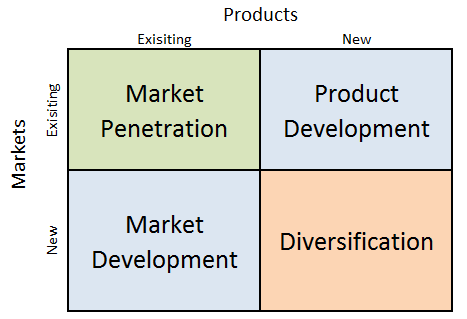
IKEA Ansoff Matrix is a marketing planning model that helps the Swedish furniture chain to determine its product and market strategy. According to Ansoff Matrix, there are four different strategy options available for businesses. These consist of market penetration, product development, market development and diversification. IKEA Ansoff Growth Matrix Within the scope of Ansoff Matrix, IKEA uses all four growth strategies in an integrated manner: 1. Market penetration. Market penetration implies selling existing products to existing markets. IKEA uses market penetration strategy aggressively. Effective marketing strategy plays an important role in increasing the efficiency of market penetration for the furniture retailer. Traditionally the world’s largest furniture retailer had relied on its famous catalogue printed in large quantities as a time-tested instrument to pursue market penetration strategy. However, in 2020 the company announced that it will stop producing catalogues starting from 2022 due to the decline of demand. 2. Product development. This involves developing new products to sell to existing markets. Product development is one of the main growth strategies for IKEA. The home improvement and furnishing chain has more than 12000 types of products in its range and it launches about 2000 new products every year.[1] The company makes some of its products in-house, as well as, purchases from suppliers. 3. Market development. Market development strategy is associated with finding new markets for existing products. The world’s largest furniture retailer engages in market development extensively. IKEA has 11 franchisees operating in more than 500 locations in 63 countries.[2] The company is forecasted to enter into more developing markets in short and medium term perspective. 4. Diversification. Diversification involves developing new products to sell to new markets and this is considered to be the riskiest strategy. IKEA experiments with diversification business strategy occasionally. IKEA restaurants within furniture retail shops can…
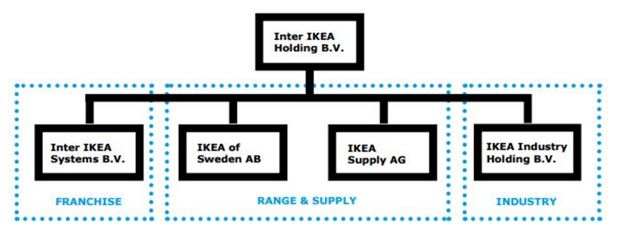
IKEA has a unique organizational structure. Specifically, “around the globe, a large number of companies operate under the IKEA trademarks. All IKEA franchisees are independent of Inter IKEA Group. A large group of franchisees are owned and operated by INGKA Group. Inter IKEA Group and INGKA Group have the same founder, and a common history and heritage, but have operated under different owners and management since the 1980s”[1] Figure 1 below illustrates the essence of IKEA organizational structure: Figure 1 IKEA organizational structure Inter IKEA Group integrates of a group of companies. The group sets strategic direction for the whole business and connects all IKEA franchisee. The group is formed of three core businesses as illustrated in Figure 1 above: 1. Inter IKEA Systems B.V. is the furniture retailer’s franchisor worldwide. This unit also deals with franchise agreements with 11 franchisees that operate in more than 500 locations.[2] 2. IKEA Range & Supply develops and supplies products for the home improvement and furnishing chain. 3. IKEA Industry produces home furnishing products and it manufactures about 10-12% of the total range. The present organizational structure of IKEA illustrated in Figure 1 above is the outcome of a major restructuring initiative that was introduced in 2016. To improve the franchise system and clarify roles, IKEA range, supply and production activities were transferred to the new Inter IKEA Group headed by Inter IKEA Holding B.V. Currently, Jon Abrahamsson Ring is the CEO of Inter IKEA Holding B.V. The Figure 2 below illustrates the overview of the franchise system. Figure 2 Overview of the IKEA franchise system[3] Specifically, IKEA Group sold key subsidiaries for EUR 5.2 billion to increase the flexibility of the business to be able to adapt to changes in the external global marketplace. IKEA management considers this change to be much…
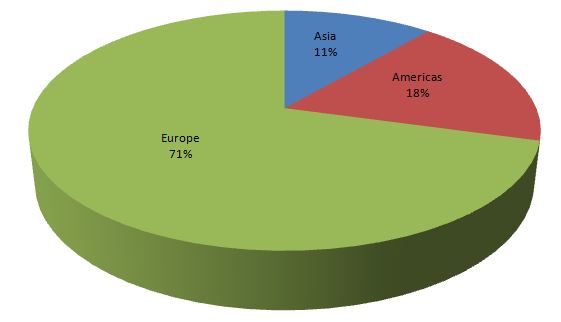
SWOT is an acronym for strengths, weaknesses, opportunities and threats related to organizations. SWOT analysis is a strategic tool that helps businesses to analyse internal and external factors affecting the bottom line. Strengths and weaknesses are internal factors that can be influenced by the company. Opportunities and threats, on the other hand, are external factors that have to be taken into account in strategic decision-making by the senior management. The following table illustrates IKEA SWOT analysis: Strengths 1. Market leadership in the global scale 2. Democratic design concept 3. Competency in cost-cutting through product and process innovation 4. Brand value and solid financial position 5. Vast, yet focused product range Weaknesses 1. Weak presence in Asia 2. Damaged reputation due to a series of incidents 3. Competitive advantage difficult to sustain 4. Lack of differentiation of IKEA products and services 5. Lack of flexibility due to large size Opportunities 1. Increasing emphasis on CSR 2. Increasing presence in developing countries 3. Adding premium range of products into portfolio 4. Strengthening cost leadership competitive advantage through technological innovation 5. Benefiting from increasing digitalization of various business processes Threats 1. Decline in demand due to increase in consumer income 2. Unsustainability of ‘democratic design’ concept 3. Emergence of competition from Asia 4. Increasing costs of raw materials 5. Global economic and financial crisis SWOT Analysis summary for IKEA Strengths in IKEA SWOT Analysis 1. IKEA is an undisputed market leader in the global market of home improvement and furnishing. The Swedish furniture chain has 11 franchisees operating in more than 500 locations in 63 countries.[1] Additionally, the furniture retailer has 22 Pick-up and Order…

The current IKEA leadership practices and patterns are based on leadership principles and life philosophy of its founder Ingvar Kamprad. Known to practice transformational and charismatic leadership styles, Ingvar Kamprad had been a driving force for many decades behind the phenomenal success of the home improvement and furnishing chain. Ingvar Kamprad founded the furniture retailer in 1943 and after leading the business for 70 years, he handed over control to his three sons. Nevertheless, work principles of the founder associated with frugality and effectiveness continues to serve as a basis for IKEA leadership practices in modern days. In 2017 Jesper Brodin became President and CEO of IKEA Group, INGKA Holding B.V. and its controlled entities. He is only the 6th CEO in The Swedish furniture chain’s history of more than 75 years. Mr. Brodin has worked as an assistant to founder Ingvar Kamprad and it is widely believed that IKEA CEO will not change the strategic direction set by the founder of the business. The CEO of Inter Ikea that manages company’s brand and concept Mr. Jon Abrahamsson Ring has also served as founder’s assistant for many years. It has been noted that “former assistants of Mr. Kamprad have had a near monopoly on the leadership of the two main companies in the furniture empire in recent times”[1]. Apart from two executives mentioned above, former Ingka CEOs Peter Agnefjall and Anders Dahlvig were also former assistant to Mr. Kamprad. IKEA leadership principles are based on the following pillars: 1. Leading by example. It is difficult to contain IKEA leadership style into a single classification due to a unique nature of the business in more than one ways. Perhaps, leading by example, may the most closely characterise leadership practices at IKEA. The famous quote by IKEA founder Ingvar Kamprad…

IKEA business strategy is built upon the IKEA concept. The IKEA Concept starts with the idea of providing a range of home furnishing products that are affordable to the many people, not just the few. It is achieved by combining function, quality, design and value – always with sustainability in mind. The IKEA Concept exists in every part of the company, from design, sourcing, packing and distributing through to business model.[1] The following points constitute integral elements of IKEA business strategy. 1. Offering the lowest prices. Cost effectiveness is one of the solid bases of IKEA competitive advantage. The global furniture retailer is able to offer low prices thanks to a combination of economies of scale and technological integration into various business processes. 2. Increasing variety of products. Great range of products also belongs to the list of IKEA competitive advantages. There are 12000 products across in IKEA portfolio and the company renews its product range launching approximately 2000 new products every year.[2] The company is also increasing its presence in food and catering industries. 3. International market expansion strategy. The home improvement and furnishing chain has traditionally engaged in new market development in an aggressive manner. IKEA has11 franchisees operating in more than 500 locations in 63 countries.[3] Furthermore, The Swedish furniture chain has long-term plans to establish its firm presence in many developing countries. 4. Benefiting from strategic alliances. The global furniture retailer benefits from strategic alliances to a maximum extent. The formation of strategic alliances is placed at the core of IKEA business strategy. The list of the most successful collaborations include partnership with Apple to explore the possibilities of Augmented Realityas a tool for home-furnishing, partnership with LEGO for new product development and partnership with Adidas in knowledge sharing about customer behaviour. Experience and competency…
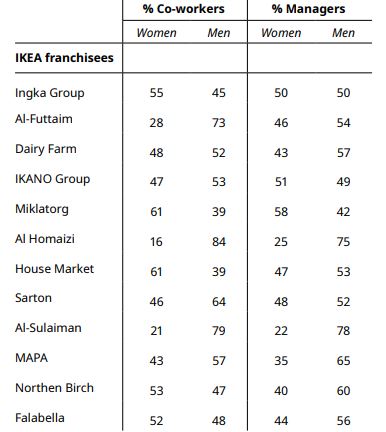
IKEA organizational culture plays an important role in maintaining cost-effective business operations to sustain cost leadership business strategy for the furniture giant. In other words, due to its cost leadership business strategy, IKEA does not offer the most competitive financial compensation to its workforce. Instead, the home improvement and furnishing chain attracts employees with intangible benefits that are deeply integrated within IKEA corporate culture. IKEA organizational culture is based on the following principles: 1. Simplicity and high level of informality. It has been noted that “humbleness in approaching tasks and simplicity in the way of doing things are cornerstones of the IKEA culture”.[1] For example, in IKEA US only a few executives have business cards and “everyone is on a first-name basis and sits side by side at IKEA desks and if you have an ego that needs stroking, IKEA is not the workplace for you.”[2] 2. The value for teamwork. Executives who prefer to manage as one-man show do not fit into IKEA organizational culture. The Swedish furniture chain wants to ensure that it employs only individuals who share its values and appreciate its culture. For this reason, individuals wishing to join IKEA are offered to take an online test which poses a series of 10 work-based scenarios with a choice of actions. The outcome of the test advises applicants if they are likely to ‘fit’ into IKEA organizational culture. 3. Embracing diversity among employees and different ways of doing things. Diversity among the workforce in terms of gender, race, age, ethnicity and sexual orientation is an important element of IKEA corporate culture. As illustrated in table below, there is an adequate level of women representation among across franchisees in floor level workers, as well as, management. IKEA employee gender diversity in FY21[3] Furthermore, the furniture retailer supports…
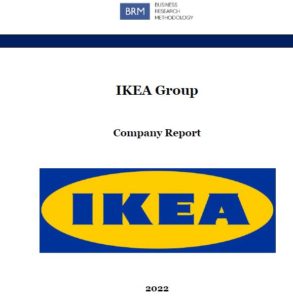
IKEA Group owned by Stichting INGKA Foundation is the largest furniture and home appliances manufacturer and retailer in the world. Founded almost eight decades ago in Småland, southern Sweden by Ingvar Kamprad, today IKEA Group has 11 franchisees operating in more than 500 locations in 63 countries (Annual Report, FY21). By the end of FY21 IKEA employed 225000 people worldwide, an increase of 8000 people compared to the previous year. The world’s largest furniture retailer offers nearly 12000 products and develops approximately 2000 new products each year. In FY21 the company generated total operated income of EUR 25.6 billion, an increase of 8.5% compared to the previous year. Net profit for the year amounted to EUR 1.4 billion (Annual Report, FY21). IKEA’s vision is “to create a better everyday life for the many people” and the company follows an extreme cost leadership business strategy along with new product development strategy to realize this vision. International market expansion strategy also represents an important element of IKEA business strategy. Leadership style exercised to manage the home improvement and furnishing chain can be branded as leading by example, as set by the late founder of the business Ingvar Kamprad. Furthermore, the company has integrated the principles of frugality and intangible employee motivation into its leadership practices. The Swedish furniture chain has devised a unique and complicated organizational structure designed to pay minimum taxes. IKEA possesses a number of noteworthy strengths such as market leadership, ownership and efficient application of democratic design concept and solid financial position of the business. At the same time, the global furniture retailer has serious weaknesses as well. These include weak presence in Asia, difficulty to sustain the competitive advantage and the lack of flexibility of the business due to its large size. IKEA Group Report contains the application…

This article critically evaluates the notion of firm and transaction costs and explores how do firms set prices. The article starts with setting context for discussions and this is followed by critical evaluation of firms from the perspective of transaction costs. Moreover, the article contains critical analysis of price setting practices of firms by referring to set of relevant studies and theoretical frameworks. How do firms set prices? Although the range of issues discussed in this paper are not new and they have been previously addressed by many economists in varying levels of depth, importance of firms, evaluation of transaction costs approach and the nature of price-setting strategies engaged by firms may be greater than ever before. In other words, recent global economic crisis of 2007 – 2009 has revealed significant shortcomings of liberal market economy at multiple levels, and from this perspective reassessment of the core notion of firms, relevance of transaction costs and price setting practices of modern businesses may provide valuable data in terms of developing macroeconomic policies to minimise chances of economic crises in the future. The most popular price setting techniques include market level pricing, competition pricing, variable and fixed mark-up pricing, pricing set by government regulatory agency, and customer-set pricing (Anderton, 2008). Each of these price setting techniques has its own advantages and disadvantages and selection of any particular technique depends on a wide range of factors such as the nature of products and services, intensity of competition, customer purchasing power etc. Additionally, pricing strategies can be divided into new-product pricing, differential pricing, psychological pricing, product-line pricing and promotional pricing categories (Pride et al, 2010: 386). The choice of a pricing strategy according to this particular categorisation depends on the business strategy of the company. For example, the level of effectiveness of the…
By John Dudovskiy
Category: Economics
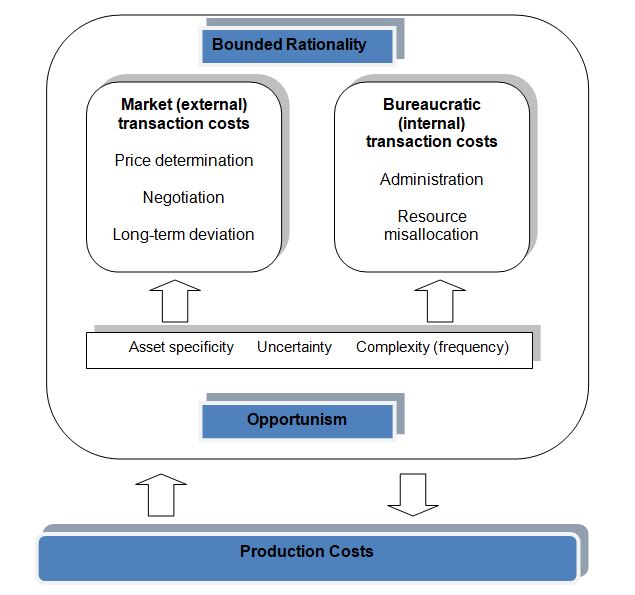
What is a firm? In essence, as private sector organisations firms pursue the main objective of profit maximisation. However, this is the most basic approach to firms and roles and responsibilities of firms can be studied in a greater level of depth with the application of relevant theoretical frameworks. There are several main theories of the firm and distinction can be made between these theories on the basis of approach adopted towards relationships between the firm and society (Sloman et al., 2013). For example, one of the earliest approaches to firm, ‘black box’ perspective perceives firms as economic entities that transform input into output in a profitable manner. ‘Black box’ perspective involves “how production and cost functions interact with demand on the market, i.e. the emphasis is on technical matters and how firms function in the context of the market” (Dietrich, 2007:19). ‘Black box’ perspective to firms can be criticised on the grounds of being overly abstract and general, and it does not take into account the impact of firm-specific factors. Transaction cost can be defined as “the costs incurred when firms buy inputs or services from other firms as opposed to producing them themselves” (Sloman et al., 2013:33). Transaction cost economics originates from the work of Ronald Coase who argued that “firms exist to economise on the costs of using the market” (Sykuta, 2010: 39). In other words, Coase perceives the cost of using the price mechanism as the main profit motivation for firms. Coase insisted firms to be perceived in real-life environment taking into account specifications of the real world, as well as, transaction costs of alternative organisational structures. Transaction cost economics is associated with Oliver Williamson, who expanded the work of Coase (1937) by increasing the levels of focus on organisational forms and associating business management with…
By John Dudovskiy
Category: Economics

Different types of tourism can be specified as visiting friends and relatives, religious tourism, social tourism, cultural tourism, hedonistic tourism, special interest tourism, business tourism, health tourism, educational tourism, scenic tourism and activity tourism (Swardbrooke and Horner, 2007). Swardbrooke and Horner (2007) argue that tourism needs to be classified as activity rather than industry. However, this viewpoint can be subjected to criticism because a wide range of activities related to tourism have positive implications to national economies from financial viewpoint, therefore tourism is larger than merely being an activity. Type Numbers Adaptation to local norms Elite Rare Adapts fully Off-beat Uncommon Adapts well Unusual Occasional Adapts somewhat Incipient mass Steady flow Seeks Western amenities Mass Continuous Expects Western amenities Charter Massive Demands Western amenities Smith’s typology of tourists Source: Smith (1977) Alternatively, types of tourism and tourists are divided by King and Hyde (1989) into the following six psychographic type: New indulgers mark a type of tourists who try to escape stress through engaging in new tourism experiences. Tourists belonging to this category tend to be experiential to a greater extent compared to alternative type of tourists discussed below. Anti-tourists are independent, unconventional type of tourists who prefer to explore tourism destinations alone. Anti-tourists usually do not want to be associated with ‘regular’ tourists and they tend to emphasize authenticity of their tourism activities. Big spenders prefer luxury, and therefore they expected extensive and intensive services with their tourism experiences. Big spenders are the main target customer segment for many businesses in tourism industry. New enthusiasts lack experience in tourism. This particular psychographic type of tourists tends to be highly energetic, prefer socialisation and physically demanding recreational activities. Dedicated Aussies/Kiwis are reluctant to travel outside of their home countries for chauvinistic reasons, limited budget and other reasons. Sense of safety…
